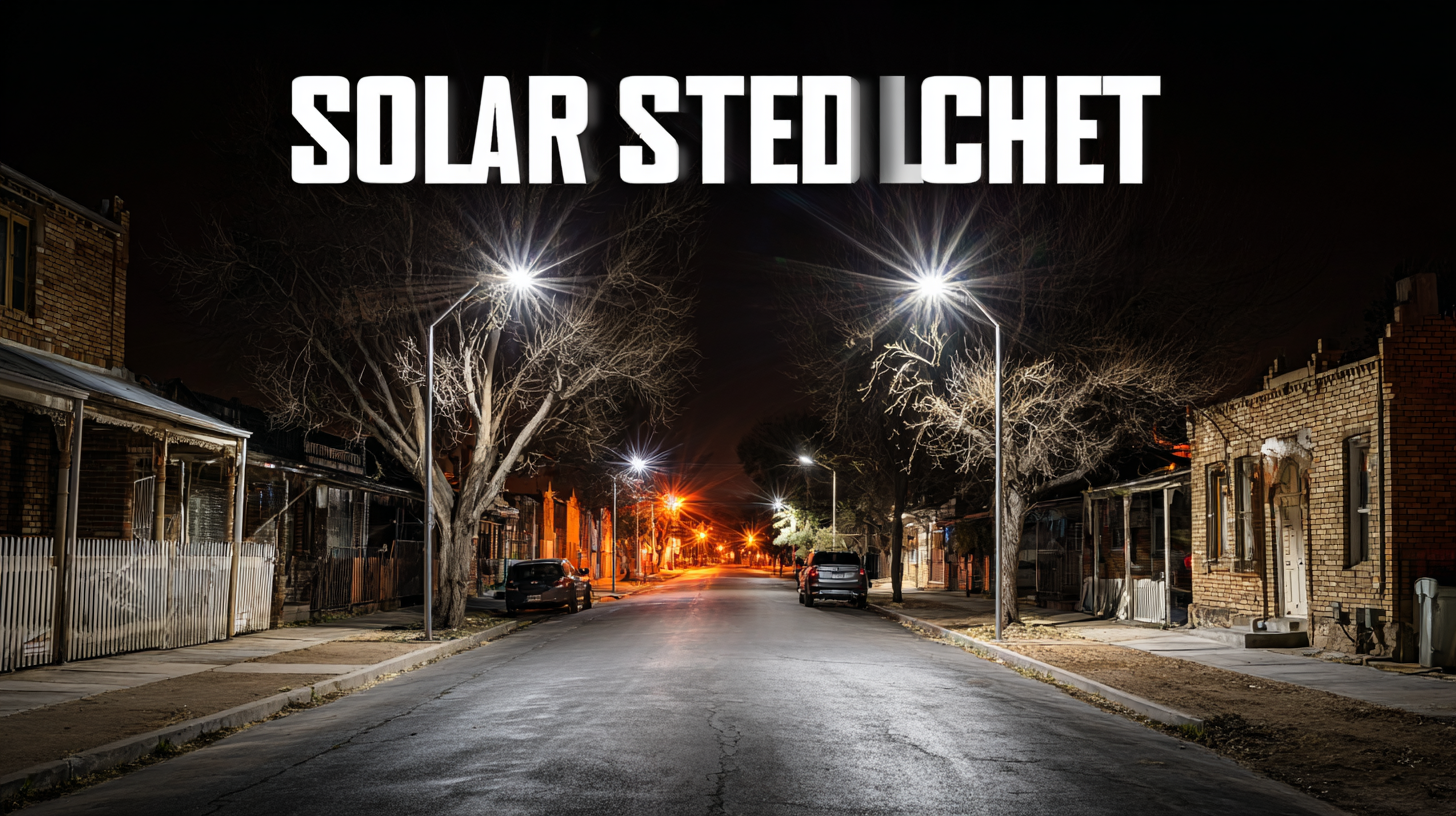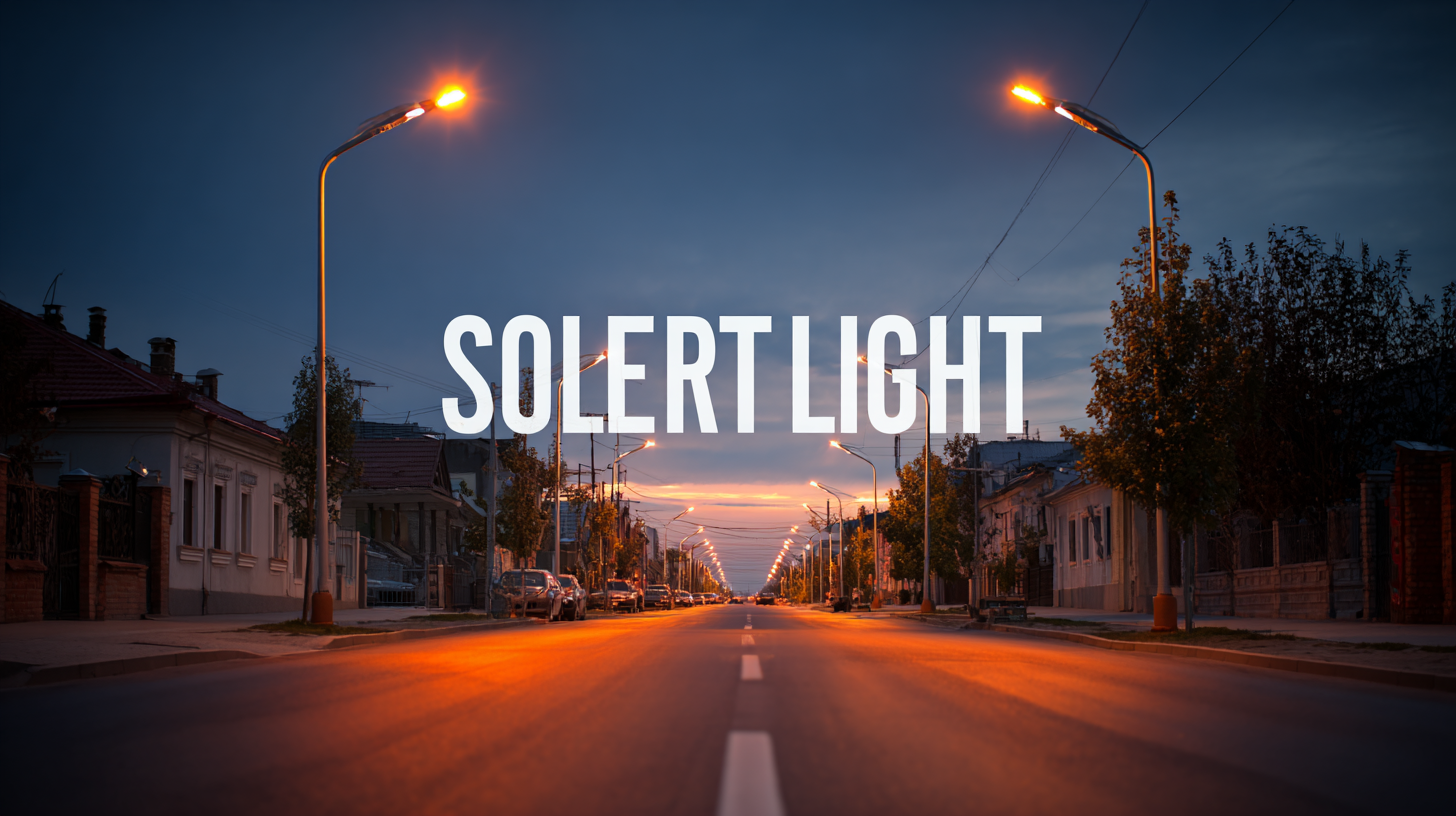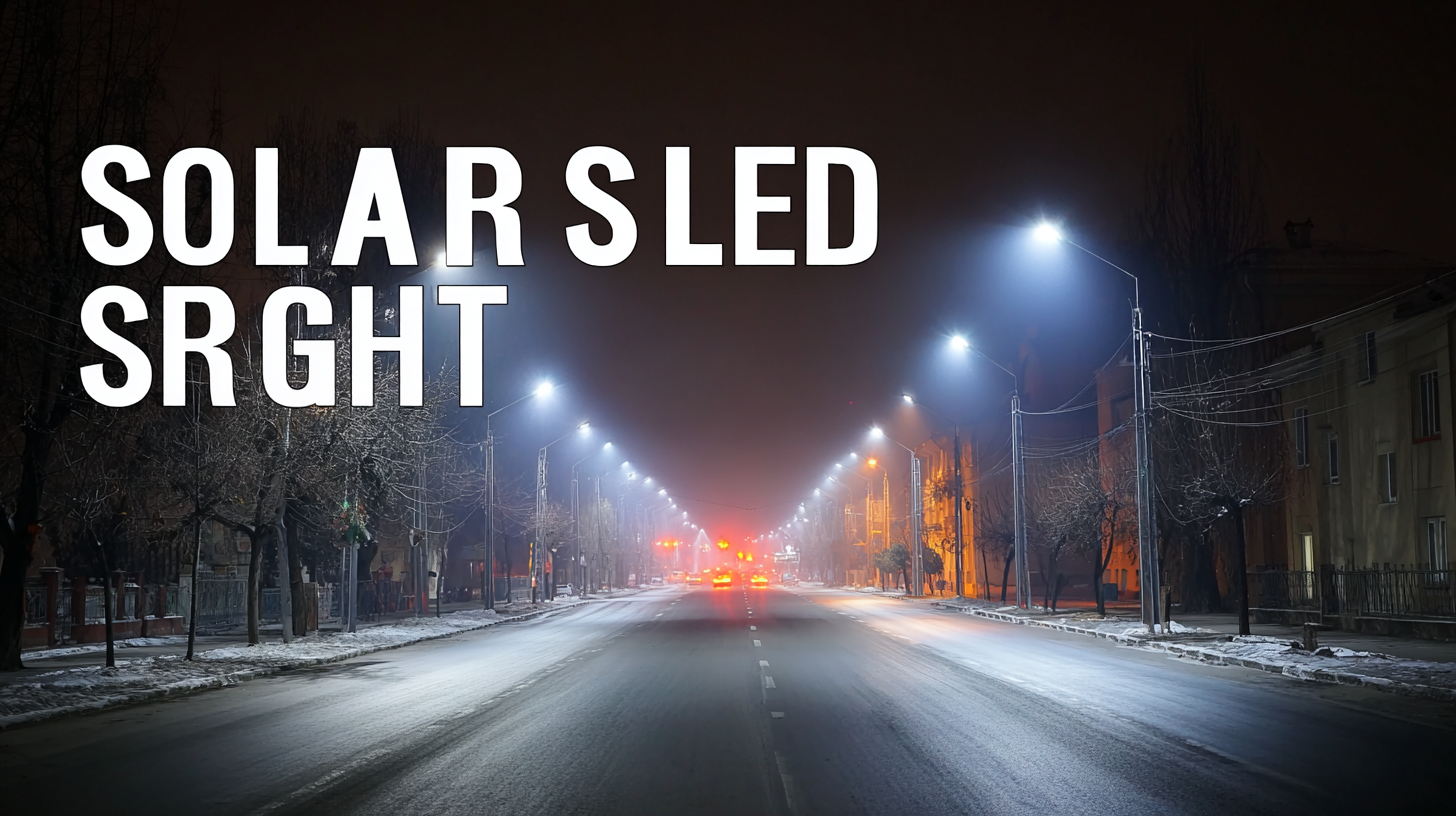News
How to Choose the Best Solar Led Street Light for Your Project
In recent years, the adoption of Solar Led Street Lights has surged, driven by the growing demand for sustainable and energy-efficient lighting solutions. According to the International Renewable Energy Agency (IRENA), global investment in renewable energy reached $300 billion in 2020, with solar energy contributing significantly to this growth. Solar Led Street Lights offer numerous advantages, including reduced energy costs, lower carbon footprints, and minimal maintenance requirements. A report by MarketsandMarkets projects that the street lighting market is expected to grow from $10.3 billion in 2021 to $17.5 billion by 2026, highlighting the increasing reliance on solar technologies across urban landscapes. As municipalities and organizations strive to enhance public safety while reducing environmental impact, selecting the best Solar Led Street Light for specific projects becomes paramount for achieving efficient, reliable, and eco-friendly lighting solutions.

Factors to Consider When Comparing Solar LED Street Lights
When selecting the best solar LED street lights for your project, there are several critical factors to consider. First, the brightness and lumen output are essential for ensuring adequate illumination in your area. Studies indicate that street lights should typically emit between 1,000 to 2,000 lumens, depending on the application. A higher lumen count translates to better visibility and safety for pedestrians and drivers alike.
Another vital aspect is the battery capacity and type. Opt for lithium-ion batteries, which provide longer life cycles and faster charging times compared to traditional lead-acid batteries. Recent industry reports suggest that systems with a capacity of at least 12,000 mAh are ideal for providing sustained light during the night, even in areas with limited sunlight exposure.
**Tip:** Always check for IP ratings to ensure your lights are weather-resistant. A minimum rating of IP65 is recommended, making them suitable for outdoor environments. Additionally, consider features like smart lighting controls that can adjust brightness based on surrounding light conditions, enhancing energy efficiency and prolonging battery life.
Comparison of Solar LED Street Light Features
Understanding Different Types of Solar LED Street Lights
When selecting the best solar LED street light for your project, it is crucial to understand the different types available on the market. Solar LED street lights primarily fall into three categories: integrated, semi-integrated, and conventional modular systems. Integrated solar street lights combine the solar panel, LED light source, and battery into one unit, offering ease of installation and minimizing the risk of mechanical failures. These units tend to be ideal for smaller areas or temporary projects where a quick setup is required.
On the other hand, semi-integrated lights feature separate solar panels and lighting fixtures, allowing for more flexibility in placement and improving sunlight absorption. These systems are often preferred for medium-sized projects where design customization and energy efficiency are priorities.
Lastly, conventional modular systems offer the most flexibility but can require more installation effort and equipment, making them suitable for large-scale developments or permanent installations. By understanding these distinct types, you can better assess your project’s needs and select the solar LED street light that best fits your requirements.
Key Features That Define Quality in Solar LED Street Lights
When choosing the best solar LED street light for your project, understanding the key features that define quality is essential. The first major aspect to consider is brightness, typically measured in lumens. Quality solar street lights should have a high lumen output to ensure adequate illumination in dark areas. Additionally, it's crucial to evaluate the light's color temperature; a warmer color creates a welcoming ambiance, while a cooler tone is more akin to daylight, providing better visibility.
Another significant feature is the solar panel efficiency, which directly impacts the light's ability to charge during the day. Higher efficiency panels charge faster and have better performance over time. You should also assess the construction quality of the lights, as materials used will affect durability and resistance to weather elements. Look for options with robust, waterproof designs to ensure longevity in various environmental conditions. With the solar street lighting market expected to grow significantly in the coming years, prioritizing these features will help you make an informed decision and select a product that meets your project's needs effectively.
How to Choose the Best Solar Led Street Light for Your Project - Key Features That Define Quality in Solar LED Street Lights
| Feature | Description | Importance |
|---|---|---|
| Lumens Output | The brightness level of the light, measured in lumens. | Higher lumens mean better visibility at night. |
| Battery Capacity | The amount of energy the battery can store, usually measured in amp-hours (Ah). | Determines how long the light can operate during the night. |
| Solar Panel Efficiency | The ability of the solar panel to convert sunlight into usable energy. | Higher efficiency means more energy harvested during the day. |
| Material Quality | The durability of the materials used in the light, including the housing and lens. | Ensures long-lasting performance and resistance to environmental factors. |
| Light Distribution | The pattern in which light is spread out from the fixture. | Affects how effectively the area is illuminated. |
| Smart Features | Capabilities like motion sensors, dimming, and remote control. | Enhances efficiency and extends battery life when properly utilized. |
| Warranty | The period during which the manufacturer will repair or replace defective products. | A good warranty reflects the manufacturer's confidence in the product's longevity. |
Cost-Effectiveness: Comparing Initial Investment vs. Long-Term Savings
When considering the best solar LED street lights for your project, it’s crucial to analyze the cost-effectiveness by comparing the initial investment with potential long-term savings. While the upfront costs of solar street lights can be significant, often amounting to a few thousand dollars depending on specifications and installation, the long-term savings are where the true value lies. By reducing or eliminating electricity costs and lowering maintenance expenses due to the durability of LED technology, these lights can lead to substantial financial benefits over their lifecycle.

Similar to the insights gained from various financial instruments, such as government saving schemes, investing in solar street lighting can also yield favorable returns. With increasing support from governments aiming to combat climate change, various incentives and rebates are becoming available, further lowering the initial investment hurdle. Hence, while evaluating solar street lights, one should account for these incentives and the long-term operational savings, as they can dramatically improve the overall cost-effectiveness of the project. Embracing such green innovations not only supports environmental sustainability but also ensures sound financial planning for future projects.
Top Brands and Models Reviewed for Solar LED Street Lights
When selecting the best solar LED street light for your project, it's essential to consider not only the brand but also the specific models that have been tested for performance and durability. Recent evaluations show that top-rated solar LED street lights offer significant energy savings and longevity, with many models boasting over 50,000 hours of operational life. Companies are now focusing on features such as motion sensing capabilities, brightness levels, and weather resistance to cater to diverse outdoor needs.
Current reports suggest that integrating quality solar street lighting can reduce energy costs by up to 80%, making them an effective investment for various environments. For instance, lights equipped with advanced solar panels and lithium batteries demonstrate faster charging times and extended usage during low sunlight days. As manufacturers enhance their technologies, selecting from the best-reviewed options becomes increasingly important for ensuring efficiency and reliability in illumination, thereby improving safety and visibility in public spaces.

